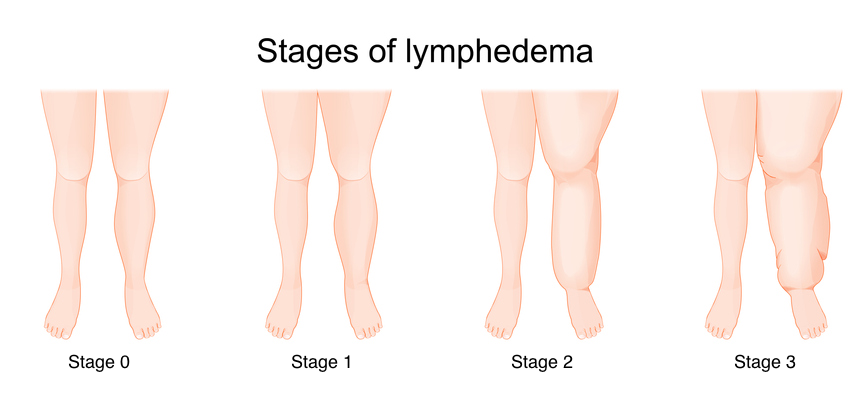Know the Facts
Lymphedema is an accumulation of lymph fluid in the soft tissues of the arms or legs. Lymph fluid, rich in protein, is normally filtered by the lymph nodes and is then released into the bloodstream. When the nodes are obstructed, lymph fluid collects and causes swelling. Lymphedema is distinguished from chronic venous insufficiency by an absence of typical varicose veins, absence of characteristic skin changes, alleviation of symptoms and reduction of swelling with limb elevation. Lymphedema is usually a chronic condition. Untreated, lymphedema can lead to irreversible skin changes, frequent infections, reduced mobility of the affected limb and diminished quality of life.

Symptoms
Swelling in the arm, leg, fingers or toes; heaviness, tightness, itching, limb pain and discomfort; restricted range of motion and nonpitting edema (accumulation of excess fluid in soft tissues causing swelling that does not indent when pressure is applied), and hardening and thickening of the skin. The amount of swelling can range from mild to severe.
Risk Factors
Family history (genetic predisposition), previous treatment for cancer, blood vessel surgery, surgical removal of fatty tissue, burns and other traumatic injuries, infections, older age and rheumatoid or psoriatic arthritis have an increased risk for developing lymphedema.
Treatment
There is no cure for lymphedema, treatment focuses on reducing swelling (compression sleeves, elevation of extremity and exercise) and preventing complications. Surgical procedures include vascularized Lymph Node Transfer, Lymphatic Bypass or Debulking Surgery.

